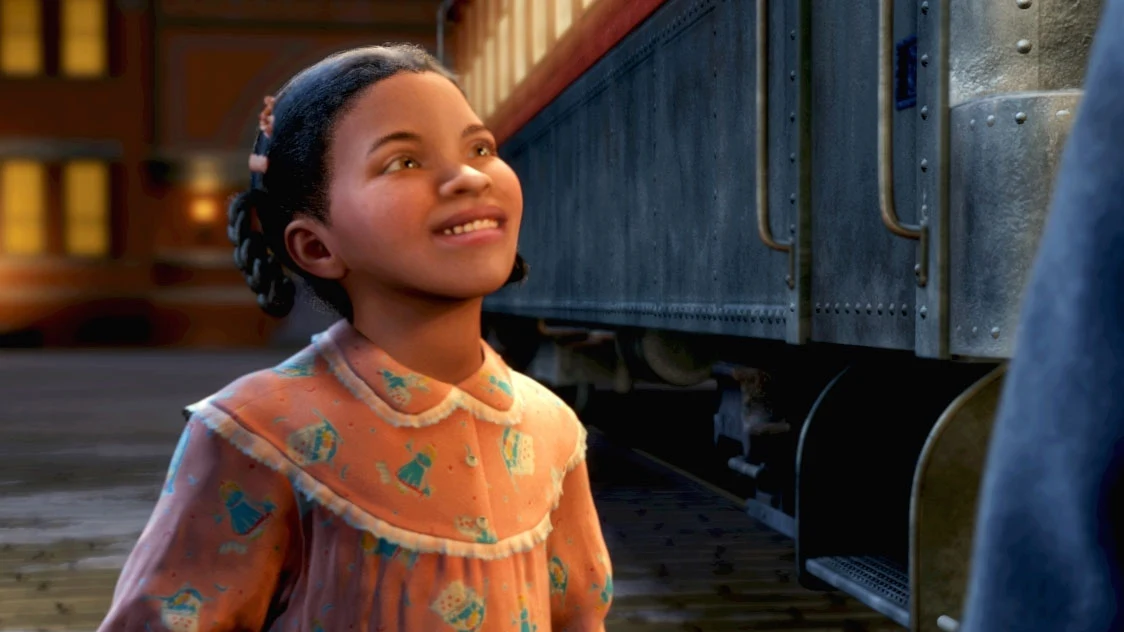What is the uncanny valley theory?
As robots become more and more similar to humans, the liking that humans feel toward robots increases, but when it reaches a certain point, it suddenly changes into a strong dislike. However, when the robot's appearance and behavior become almost indistinguishable from that of a human, likability increases again and approaches the level of emotions that humans feel toward humans. ( Wikipedia )
 (A scene from The Polar Express)
(A scene from The Polar Express)
My understanding is that when a robot mimics a human, humans perceive it as a kind of threat and are instinctively offended.
Then, when they become too similar, they become unable to tell the difference and end up accepting them as human beings.
Contents of Criticism
Some roboticists are severely criticizing this theory, saying that the rightmost part of Mori's graph is unfounded because it is only recently that human-like robots have become technically feasible. “It’s completely pseudoscience, but people think it’s science,” David Hanson, who developed a robot head that resembles his own girlfriend, said of the uncanny valley. Sara Kiesler, a researcher at Carnegie Mellon University, also questioned the scientific status of the uncanny valley, saying, “We have evidence that the uncanny valley is true, but we also have evidence that it is not true.” said. ( Wikipedia )
In my opinion, this theory is, in a nutshell, “If you wear it on your nose, it’s a nose ring. If you wear it on your ear, it’s an earring.”
If you find any image unpleasant, you can say, “Because it is included in the uncanny valley point.” If you do not feel unpleasant, you can say, “Because it is not in the uncanny valley, because it does not resemble humans at all or is too similar.”

The images above are some of the images that appear when you search for the uncanny valley.
In fact, except for the first photo, isn't it difficult to see them as similar to humans?
It's just an image that causes repulsion.
The second Lego and the third Sonic are not similar to humans, but the density of the drawings has only increased.
It is easy to mistake, but there is a difference between increasing density and resembling a human face.
The uncanny valley theory is so vague that people misuse it too often.
If you just look at unpleasant and unnatural images, they all refer to the uncanny valley.

The image above is a scene from the movie Alita.
The uncanny valley is often mentioned here, but to me, the more fundamental and specific point is that it just looks strange because the eyes are large.
 I tried reducing the size of the eyes in Photoshop. (Original left, only reduced size of right eye)
I tried reducing the size of the eyes in Photoshop. (Original left, only reduced size of right eye)
 (GIF image that changes every second)
(GIF image that changes every second)
Doesn't it look much more natural when the eyes are narrowed?
What I want to say is that the reason humans feel unnatural and unpleasant when looking at the picture above is because it falls into the uncanny valley of being similar to humans but not exactly the same as “the eyes are too big.” The question is, is there a need to say, “It is also included in it?”
That kind of approach can lead you astray on the path to solving a problem, or even lead you in the wrong direction.
In addition, due to the vagueness of the uncanny valley theory, the real cause of feeling unpleasant when seeing a certain character may be something else, but there may be cases where you draw a vague conclusion that it is because of the uncanny valley and move on without worrying or thinking about the real specific cause. .
For example, the theory that humans have evolved over many generations to instinctively perceive the smell of spoiled or harmful food as unpleasant and the smell of fresh food as fragrant? I have a hypothesis.
The idea is persuasive, interesting, and fresh.
However, it can be dangerous to apply that theory to all real-life situations because some things may or may not smell good but are toxic.
The uncanny valley theory is similarly refreshing, but a very fragmented view? I think it's just a hypothesis.
So, I think it is unreasonable to claim that when you feel unpleasant after seeing a certain character, it is all because of the degree of similarity to humans.
However, I think it is possible to consider that the degree of similarity to humans in certain aspects may be related to unpleasantness.
In other words, rather than trying to solve a problem based on the uncanny valley theory, it is not a bad idea to look for various ways to find the cause of the problem and solve it, and refer to the uncanny valley theory as one of them.
What experiment should be done to prove the uncanny valley theory?
Is it possible to quantify the degree to which a particular image or character resembles a human being?
I don't think the uncanny valley theory can be tested because I think it's impossible.
No comments:
Post a Comment